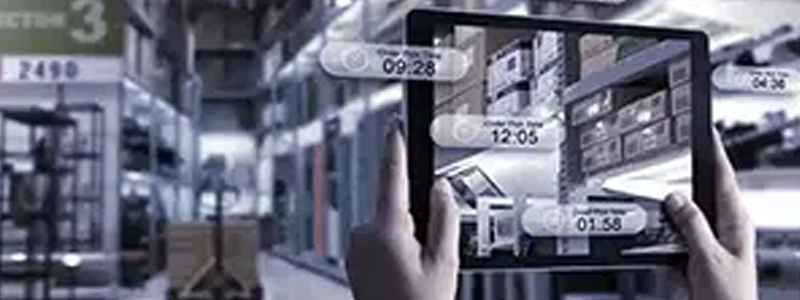Part 1 of 3: Plotly in React – Real time data visualization
How to display real-time, dynamically updated data using plotly in React.
Are you gearing up to write a new data app?
Does your business contain critically huge amounts of data that are interpreted best when visualized?
Do you want to make your data points interactive for the user without writing a ton of code?
Consider using plotly.
Plotly?
Ploty is a popular, feature-rich solution for writing data visualization apps with relatively small amounts of code. Scatter plot charts, bar charts, 3D charts, maps, and much more are all possible with plotly.
In this article…
I’ll be showing you the “Hello, World” of a plotly react app, along with making the plot display dynamic, real-time results.
What you should know already:
- Good understanding of Javascript
- Basic understanding of Typescript (this app will be in Typescript!)
- Intermediate understanding of React and React hooks
Steps in creating this real-time data plotly component:
- Create the app in codesandbox.io
- Import the required packages
- Create basic Plot component
- Add hard-coded data to Plot component
- Create state variable to be passed to Plot component
- Continuous update state variable
Create app in codesandbox.io
Begin by creating a codesandbox.io account, if you don’t already have one. Select “Create” at the top to create a new sandbox, and select React Typescript.
You will be given a new, blank typescript React project like this one:
Import the required packages
On the left you’ll see an text box where you can select npm packages to install in your app along with packages that come pre-loaded with your app.
Add the following plotly related packages:
Create basic Plot component
In App.tsx, replace the existing code in that file with this:
import "./styles.css";
import Plot from "react-plotly.js";
export default function App() {
return (
<div className="App">
<Plot />
</div>
);
}
Add hard-coded data to Plot component
In the Plot component, add two props with values:
<Plot
data={[{ x: [1, 2, 3, 4, 5], y: [4, 1, 3, 8, 5] }]}
layout={{ title: "My Test App" }}
/>
You’ll also notice that the variable passed to data is an array–this allows more than one set of data to be displayed at the same time:
<Plot
data={[
{ x: [1, 2, 3, 4, 5], y: [4, 1, 3, 8, 5] },
{ x: [1.5, 2.5, 3.5], y: [10, 11, 12] }
]}
layout={{ title: "My Test App" }}
/>

Create a state variable to be passed to Plot component
Now create a “data” state hook to pass to the data prop, like this:
import React from "react";
import "./styles.css";
import Plot from "react-plotly.js";
const count = 30;
const startingNumbers = Array(count)
.fill(1)
.map((_, i) => i);
export default function App() {
const [data, setData] = React.useState({
x: startingNumbers,
y: startingNumbers
});
return (
<div className="App">
<Plot
data={[data]}
layout={{
title: "Real-time Data App",
xaxis: { range: [-5, count] },
yaxis: { range: [-5, count] }
}}
/>
</div>
);
}
A few things to notice about this new code:
Continuously update state variable
Finally, add this useEffect hook inside your App component. This will continually update the data state hook we just made.
React.useEffect(() => {
const interval = setInterval(() => {
setData((prev) => {
return {
x: prev.x,
y: [...prev.y.slice(1), Math.floor(Math.random() * count)]
};
});
}, 1000);
return () => {
clearInterval(interval);
};
}, []);
Extras:
You can see an already built sandbox here: https://codesandbox.io/s/plotly-realtime-dataviz-blogpost-vio9p1?file=/src/App.tsx
Conclusion
In the next article for this 3 part series on Plotly, I’ll be showing you how to create a scatter plot and how to allow the user to make multiple selections.
3-Part Series:
- Part 1 of 3: Plotly in React – Real time data visualization
- Part 2 of 3: Plotly in React – Display Multiple Selections with Annotations
- Part 3 of 3: Part 3 of 3: Plotly in React – Merge Multiple Selections using polygon-clipping
About Intertech
Intertech is a Software Development Consulting Firm that provides single and multiple turnkey software development teams, available on your schedule and configured to achieve success as defined by your requirements independently or in co-development with your team. Intertech teams combine proven full-stack, DevOps, Agile-experienced lead consultants with Delivery Management, User Experience, Software Development, and QA experts in Business Process Automation (BPA), Microservices, Client- and Server-Side Web Frameworks of multiple technologies, Custom Portal and Dashboard development, Cloud Integration and Migration (Azure and AWS), and so much more. Each Intertech employee leads with the soft skills necessary to explain complex concepts to stakeholders and team members alike and makes your business more efficient, your data more valuable, and your team better. In addition, Intertech is a trusted partner of more than 4000 satisfied customers and has a 99.70% “would recommend” rating.

























